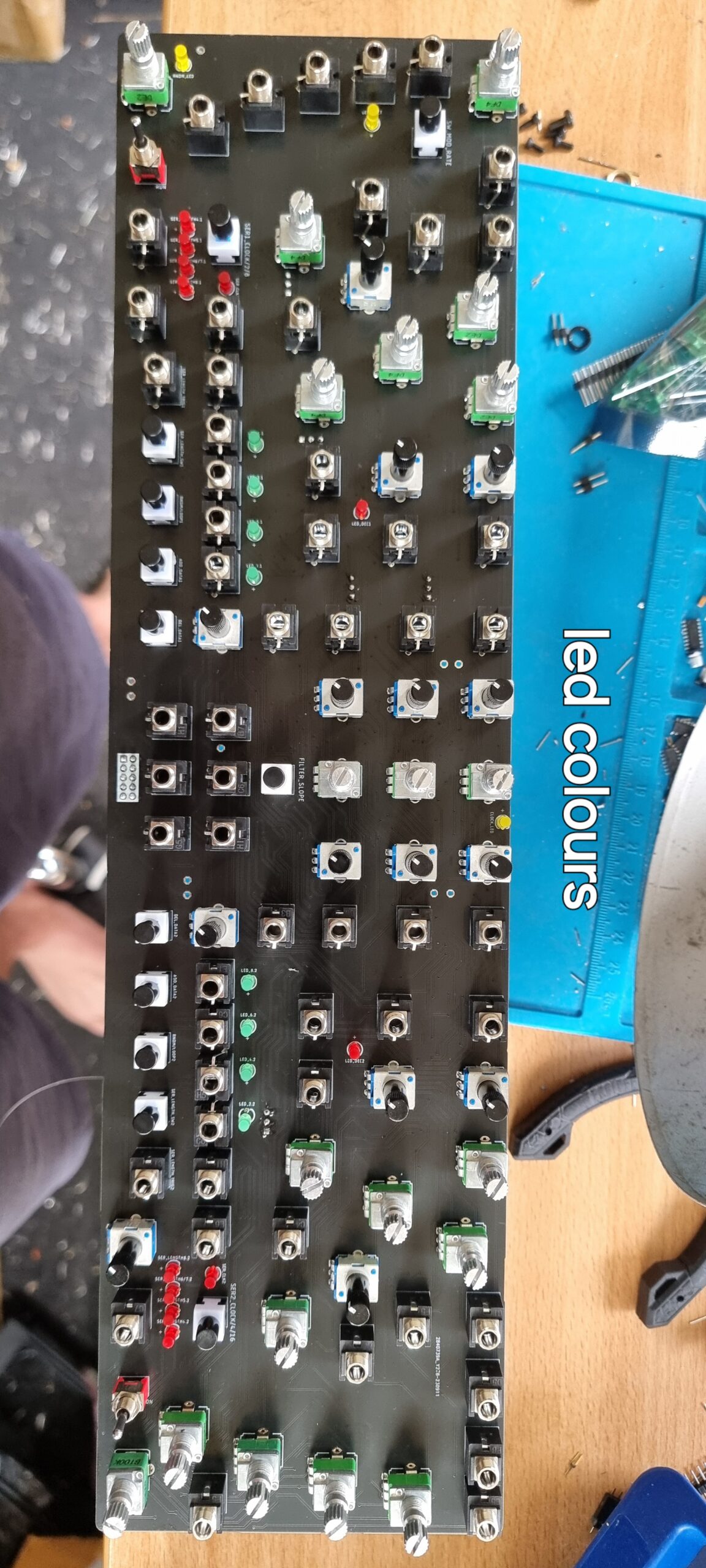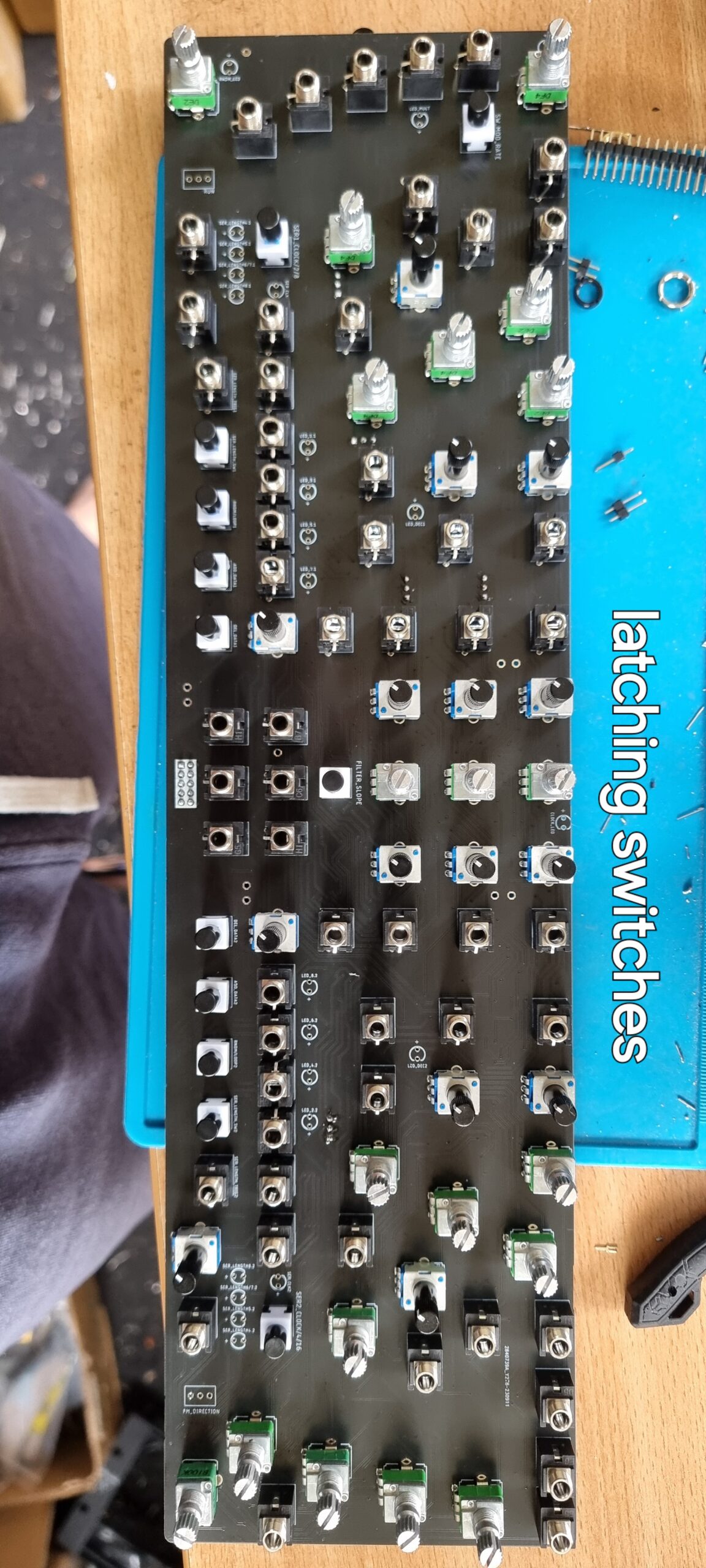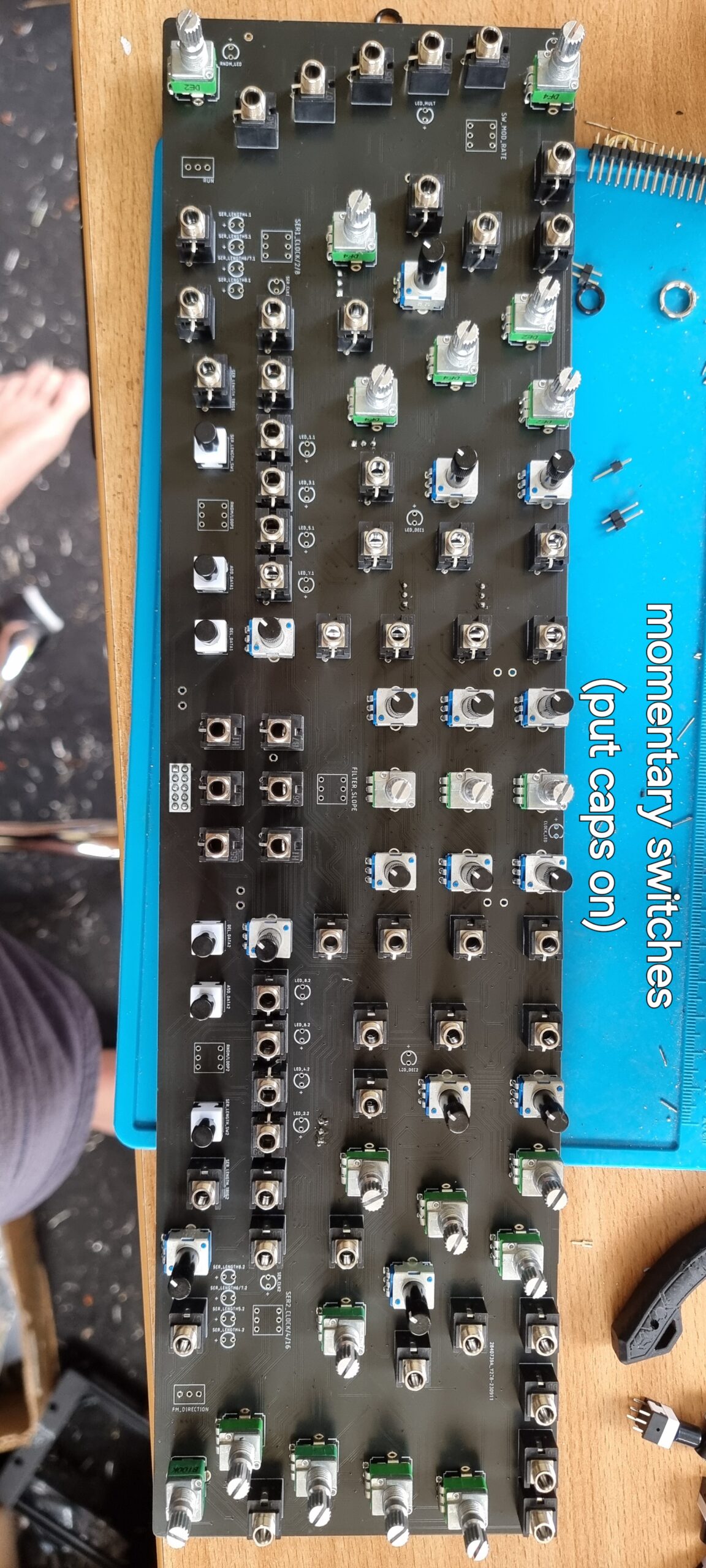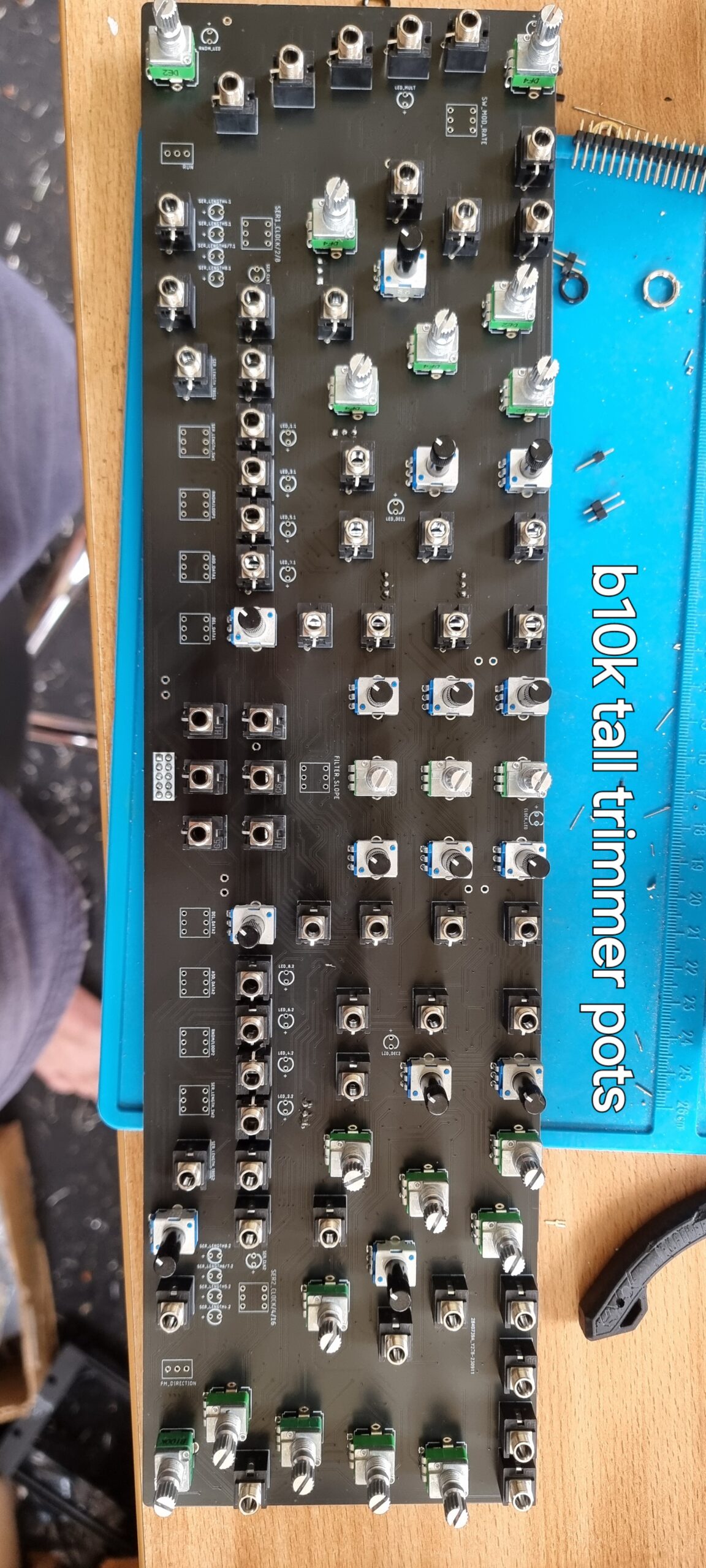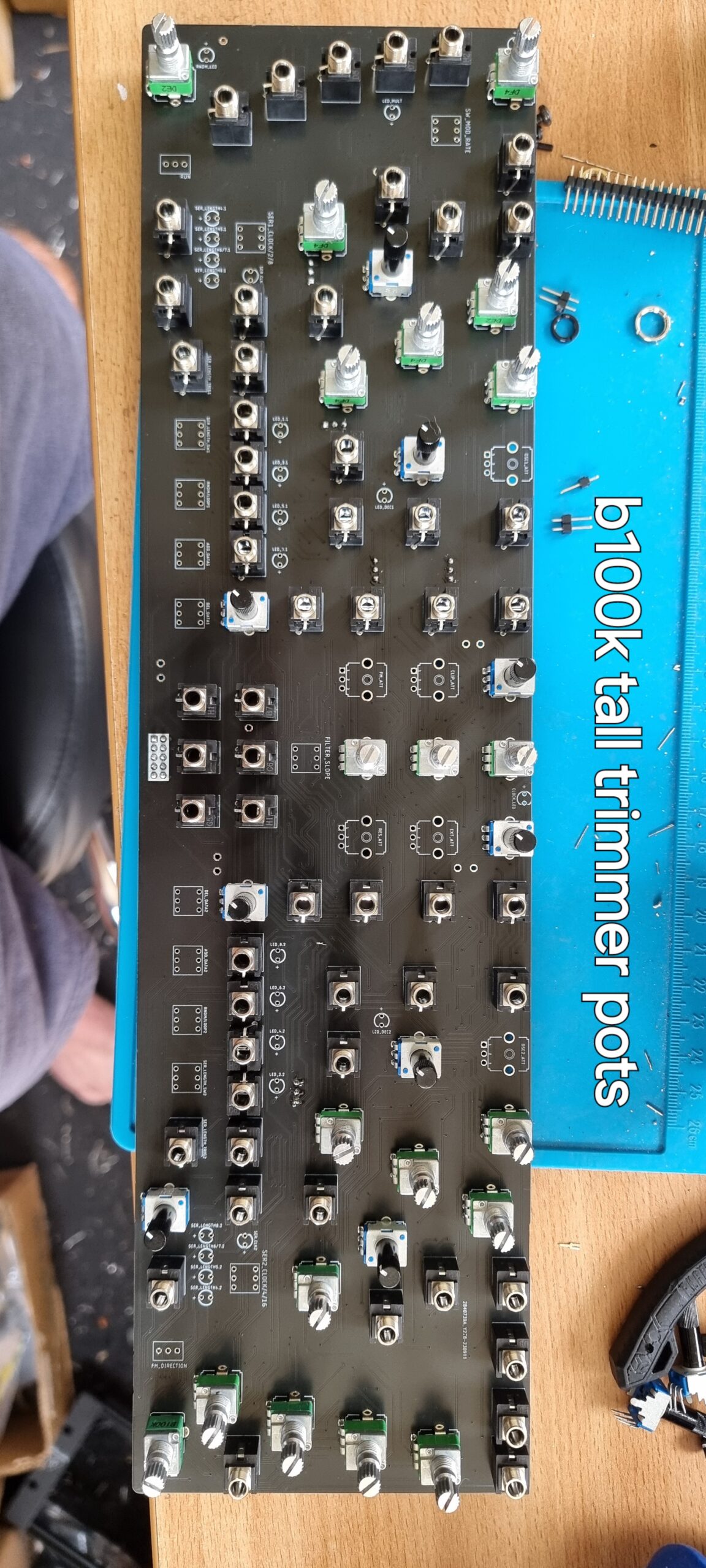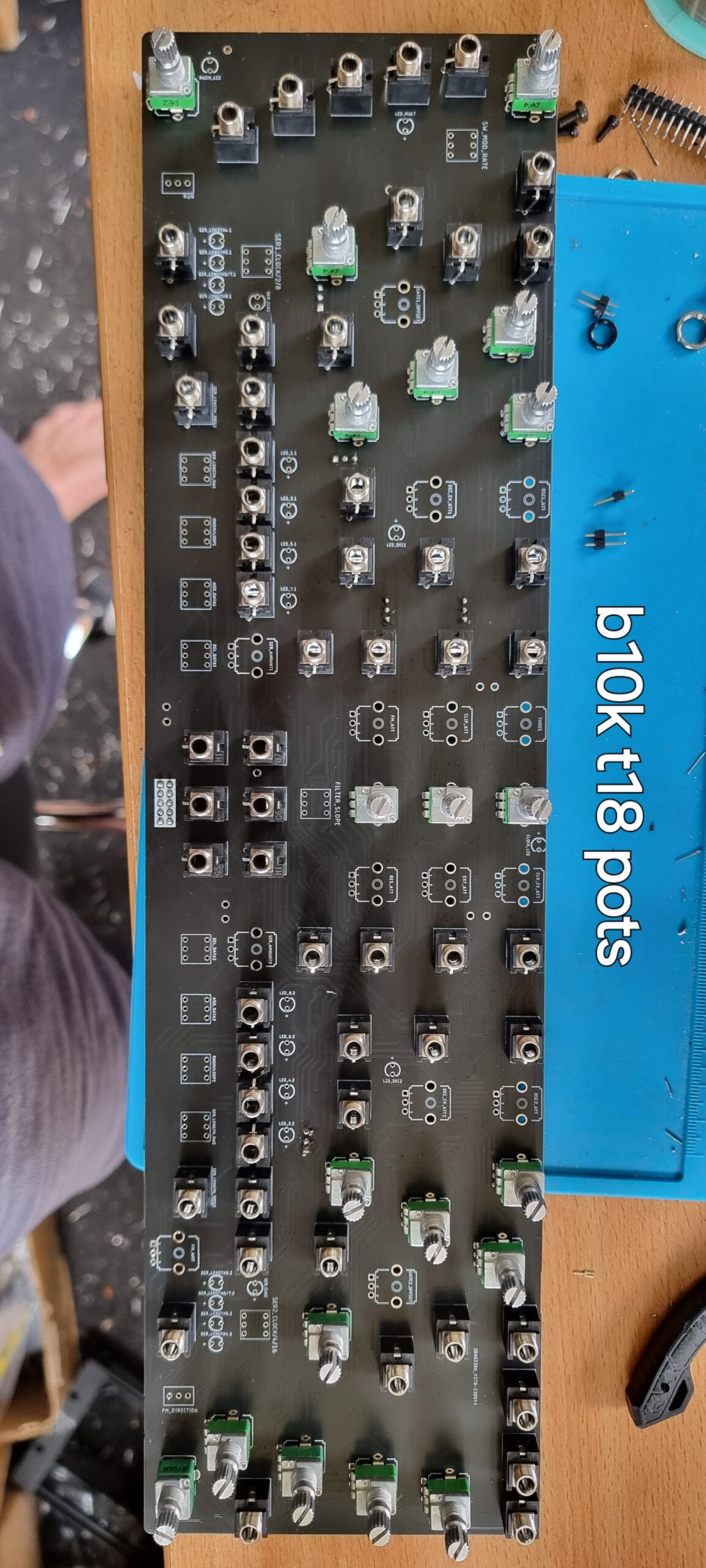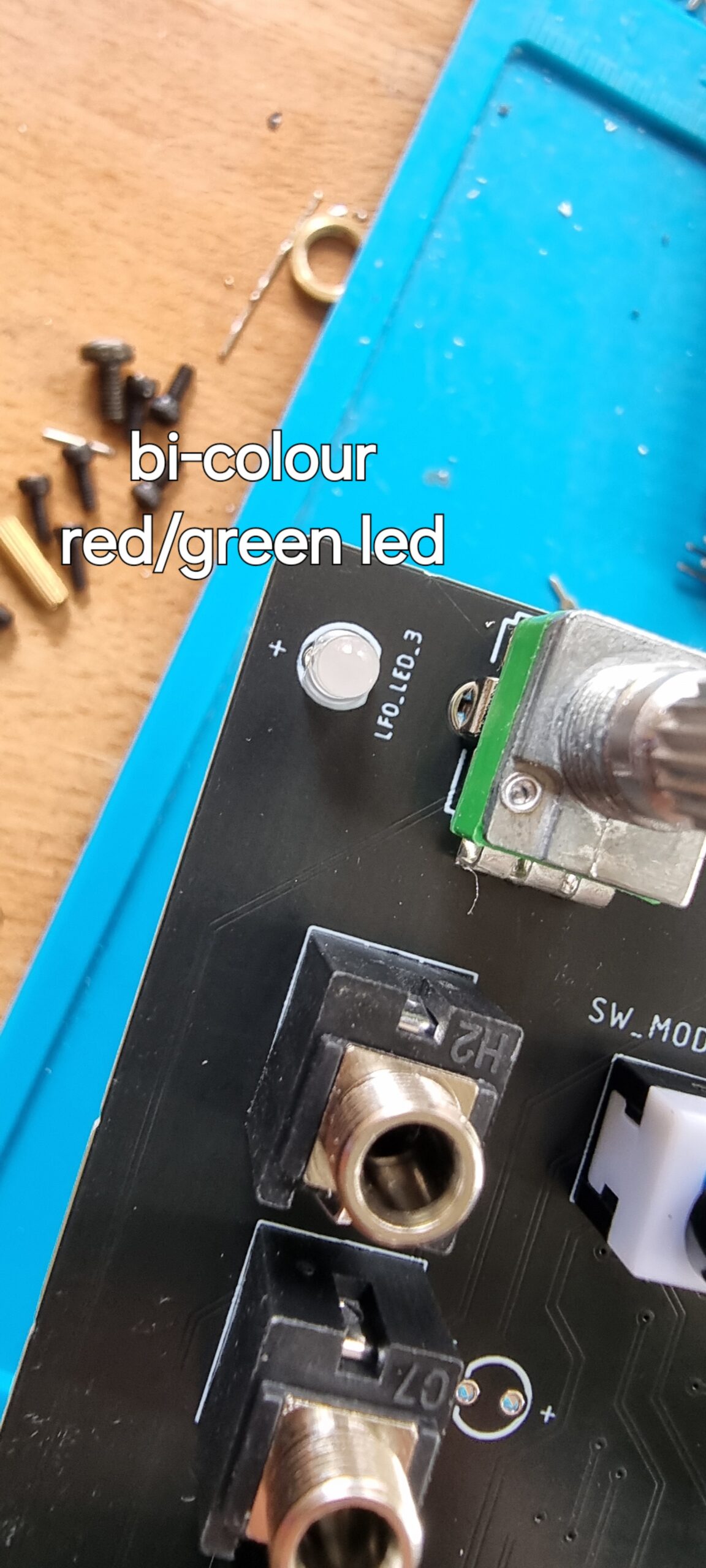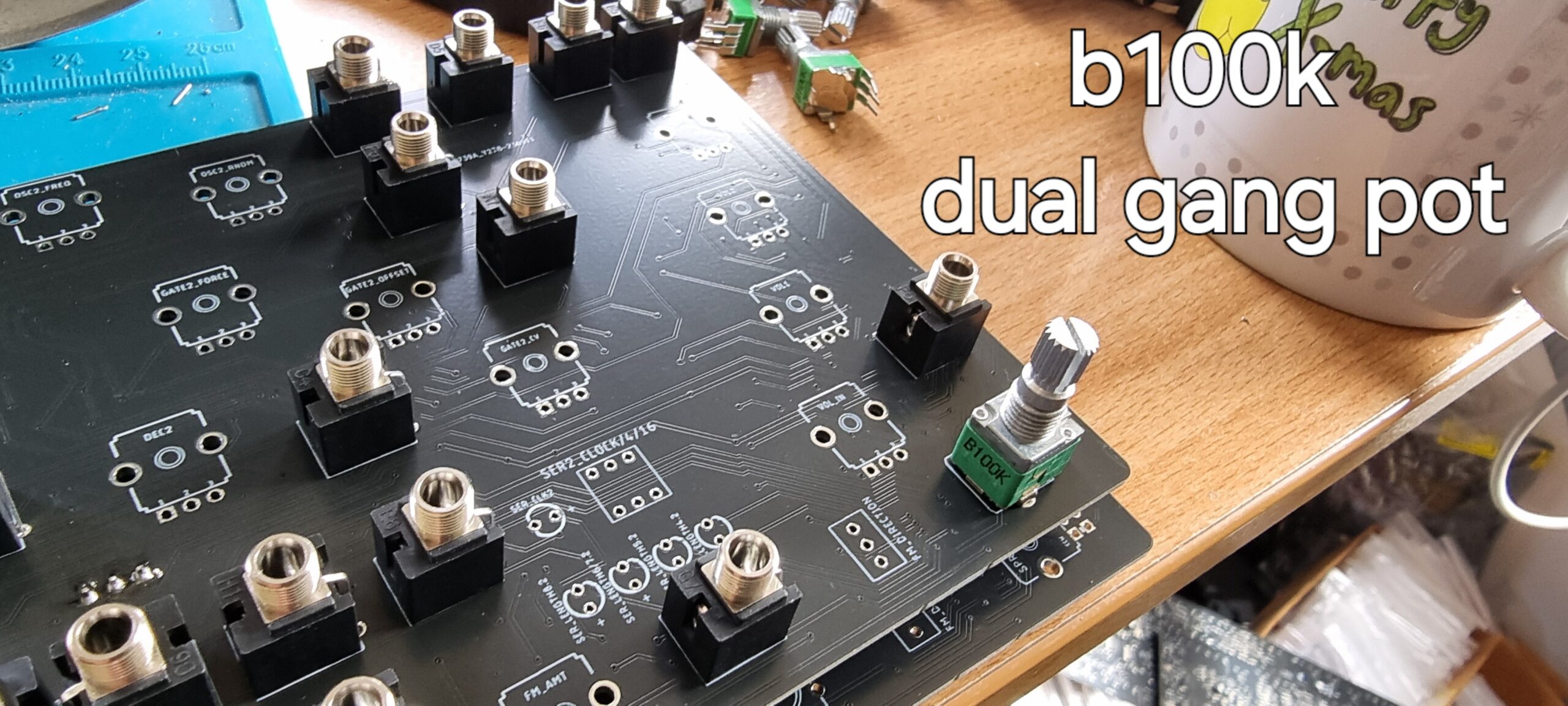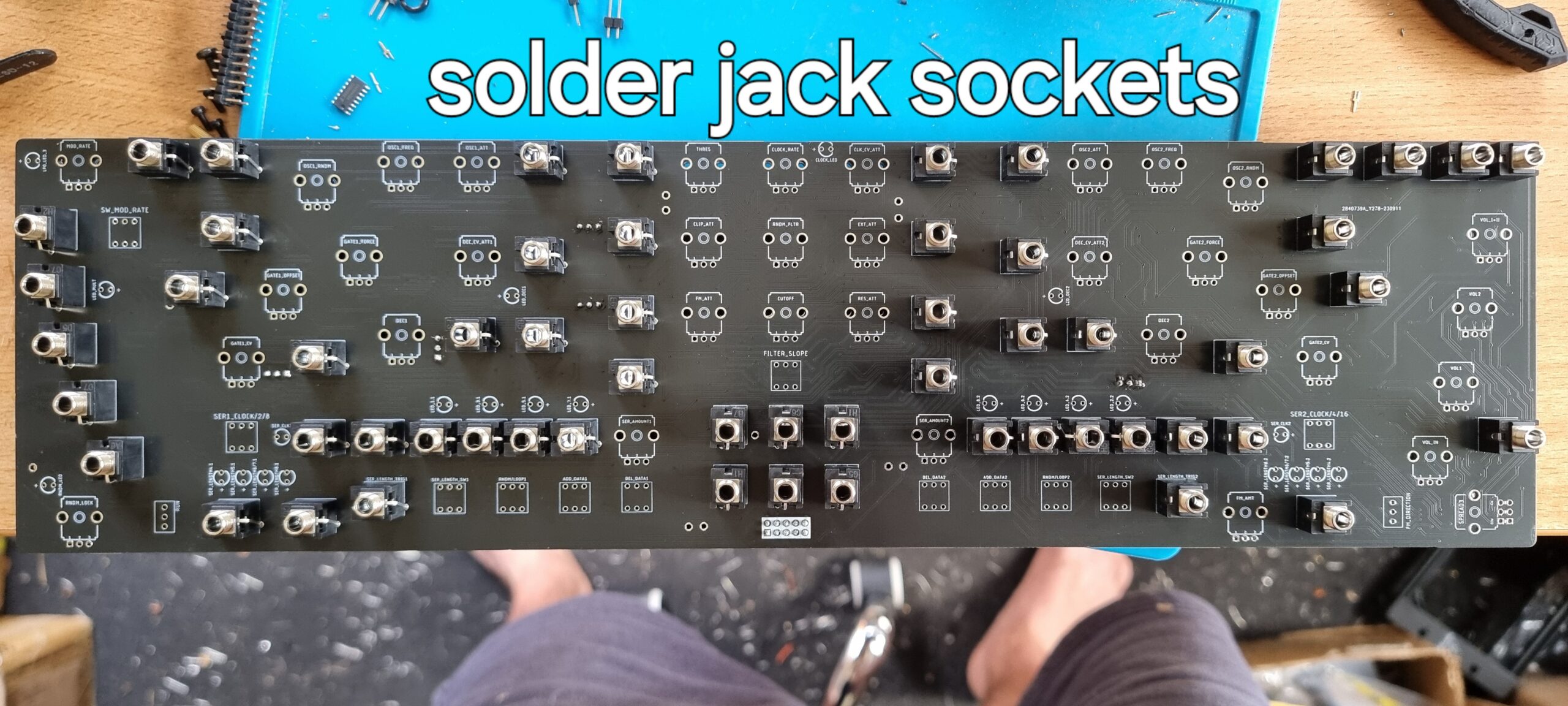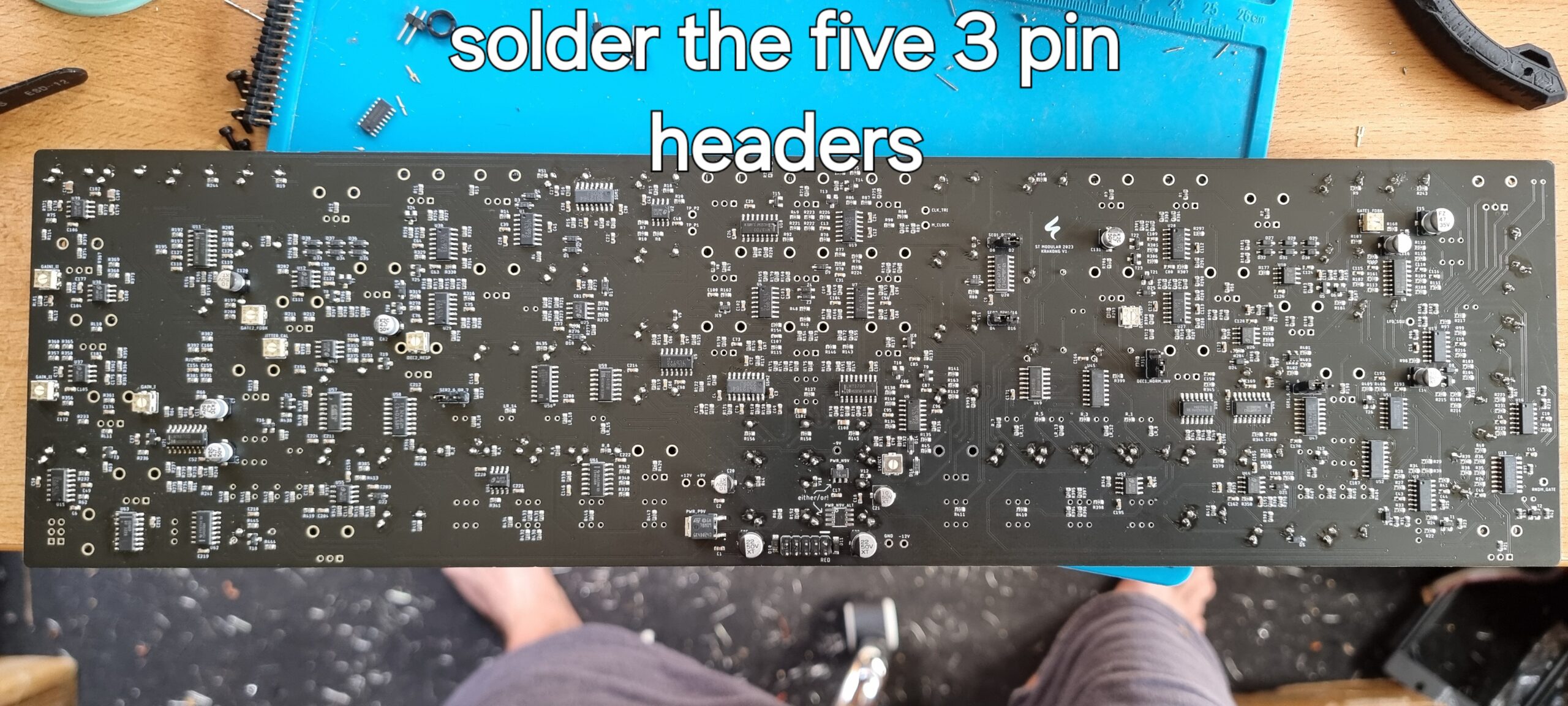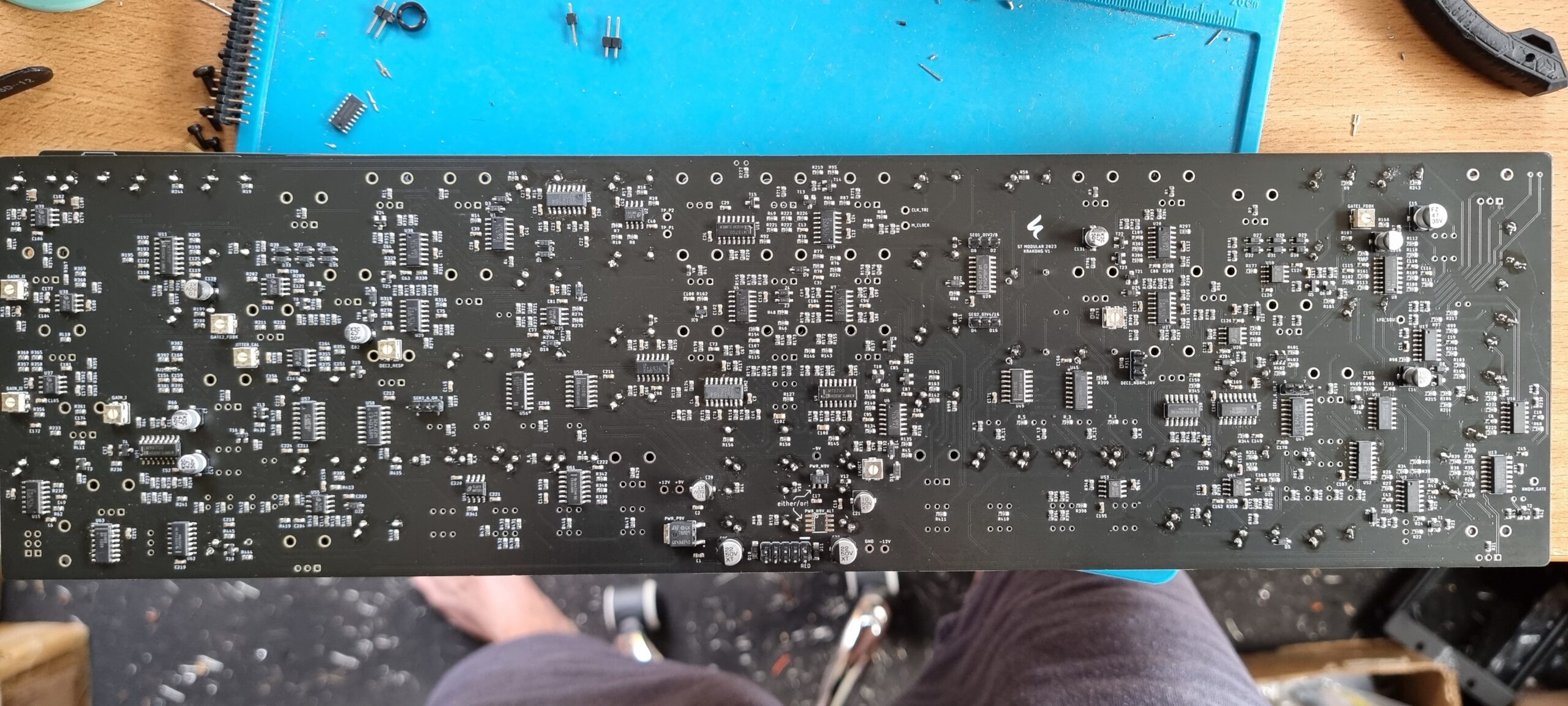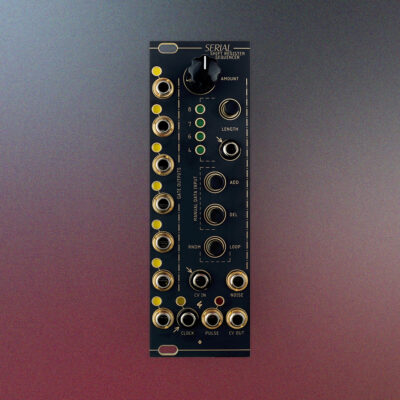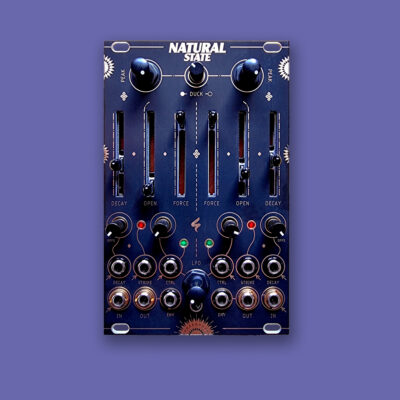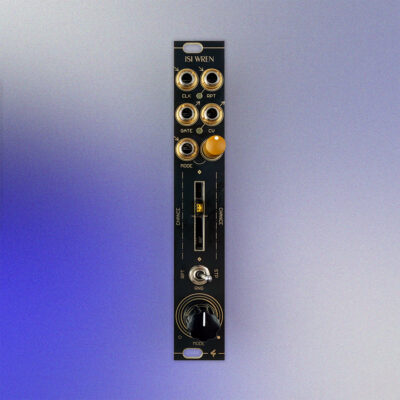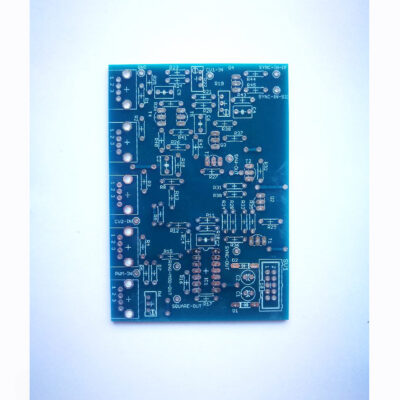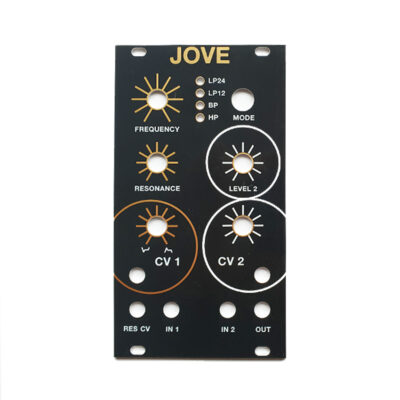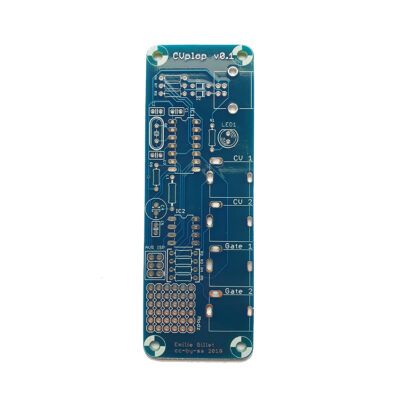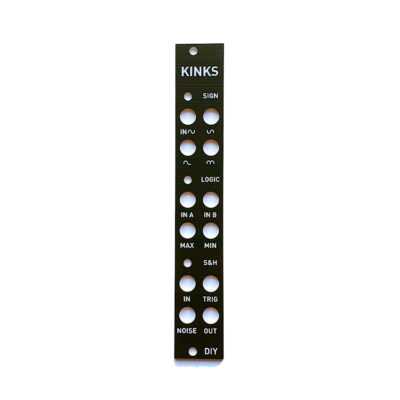Description
KRAKONG is a duophonic generative synthesizer with a sequencer per voice, FM crossover modulation, an additional random modulation sequencer, one multimode filter with VCA, a buffered multiple and a resettable LFO. The design includes a collection of manual controls and connections for patching and CV control.
Each of the unit’s two voices consists of a triangle and a square wave oscillator, a shift register sequencer, a decay envelope generator and a filter-based gate. In addition to the two synthesizer voices, which can be manually distributed in the stereo field, a third ring-modulated output of the two voices can be mixed to the main output. The tempo of all sequencers is determined by a clock generator, which can be controlled internally or synchronised externally to any voltage (audio and CV).
This musical instrument has a complete structure that allows for a wide range of sonic possibilities, from rhythmic drum patterns and tamed sonic chaos to textural and rough synth-sounds. The essence of this unit lies in the exploration of the interplay between the elements of the synthesiser, using the three sequencers and filters, manual controls and modulation patch points.
2 Oscillators
1 Ring-modulated Output of the two Oscillators
1 CV OSC FM Cross-Modulation
2 CV Filter-based Gates
2 CV Decay Envelope Generators
1 CV Multi-mode Filter with two External Inputs and VCA
1 Noise Output
2 Shift Register Sequencers
1 Random Modulation Sequencer
1 CV Clock Generator
1 Resettable LFO
1 Buffered Multiple with Inverted Output
1 Mixer with stereo distribution (panning)
OSC I and OSC II
PULSE – Output of the PULSE waveform
TRIANGLE – Output of the TRIANGLE waveform
RNDM – Amount of random modulation of the RNDM SEQ applied to the oscillator´s frequency.
FREQ – Manual control of the oscillators´s frequency.
FREQ CV Input – CV frequency input with attenuator. The oscillators don´t track exactly 1V/Oct. The MOD´s square wave output is normalized to the OSC I CV input. The MOD´s triangle wave output is normalized to the OSC II CV input.
NOISE OUT – Output of the internal NOISE GENERATOR
GATE (OSC I & OSC II)
IN – Audio input. The oscillator´s TRIANGLE output is normalized to this input.
RNDM – Amount of random modulation of the RNDM SEQ applied to filter. This knob also acts as a attenuator for the GATE CV input.
CV – CV input for the GATE cutoff. The RNDM SEQ CV output is normalized to this input.
OFFSET – GATE cutoff offset
FORCE – Amount of DECAY CV applied to the GATE
Resonance of the OSC gates can be adjusted via a trimmer on the PCB
DECAY (OSC I & OSC II)
TRIG – CV input for triggering the DECAY envelope. The SERIAL SEQ TRIG output is normalized to this input.
DEC OUT – DECAY output (OSC I Decay output can be set to inverted via jumper on the PCB)
CV – CV DECAY input with attenuator. The RNDM SEQ CV output is normalized to this input.
DECAY – Manual control of the DECAY length
SERIAL SEQ (OSC I & OSC II)
CLK IN – Sequencer clock input. The CLOCK GENERATOR´s output is normalized to this input.
CLK DIV – The normalized CLOCK GENERATOR input can be divided by 2 or 8 (selectable via jumper on PCB).
CV IN – Changes the locked note per clock according to an incoming CV signal. This signal is mixed with an internal noise source that generally generates random notes for the sequencer.
GATE OUTPUT – Random or looped GATES
CV OUT – Random or looped PITCH CV generated from a noise and CV input source.
SCALE – Range of the pitch of CV OUT
LENGTH – Select the length of a SEQUENCE. You can choose 4, 5, 6 or 7 (selectable via jumper on the PCB) or 8 steps. Please note that a change of the sequence length might also change the notes that are locked per clock signal, even in LOOP mode.
LENGTH CV – CV control for selecting the sequence length
RNDM/LOOP – Button to LOOP a sequence. If it is not looped it will generate random notes and gates.
ADD – When pressed simultaneously with a CLOCK signal, it adds a random note and gate to the sequence.
DEL – When pressed simultaneously with a CLOCK signal, it deletes a note and gate from the sequence.
MOD (Resettable LFO)
MOD KNOB – Manual control of the LFO RATE
MOD RATE – Changes the RANGE of the LFO RATE from fast to slow.
RST IN – Resets the LFO cycle on an incoming trigger signal.
MULT (1 to 3 Buffered Multiple)
IN – Multiple input. The MOD triangle waveform is normalized to this input.
OUT (2x) – Buffered output of the multiplied signal.
INV – Buffered and inverted output of the multiplied signal .
RNDM SEQ (Random Modulation Sequencer)
CHANGE – Turn this knob to create new random sequences or loop them
STEP/∞/OSC SWITCH – Controls if the CHANGE button is influenced either via the STEP IN input or the OSC I PULSE waveform. In mid-position no additional changes are applied to the CHANGE button.
STEP IN – CV input to control the CHANGE knob (if SWITCH is set to STEP) in order to created steps of looped and random sequences.
CLK IN – CLOCK input for the RNDM SEQ. The CLOCK GENERATOR´s output is normalized to this input.
RNDM OUT – Output of the RANDOM MODULATION SEQUENCER
CLOCK (Internal Clock Generator)
CLOCK – Manual control of the CLOCK rate
CLOCK CV – CV input with attenuator to control the clock rate. The RNDM SEQ CV output is normalized to this input.
EXT CLK – External Clock input that overrides the internal clock. Any signal can be patched to this input (CV or audio).
THRESHOLD – Sets a voltage threshold at which a clock pulse is generated. With a low threshold, clock pulses are already generated for very low voltages and conversely with a high threshold, clock pulses are only generated at peak voltages. In this way, you can use an audio drum loop, for example, to generate a clock signal and control the amount of clocks generated.
MLTMD FILTER (Multi-Mode Filter)
CUTOFF – Manual control of the filter´s CUTOFF frequency
RNDM – Amount of random modulation of the RNDM SEQ applied to filter.
OVERLOAD IN – External input with attenuator. If you turn the attenuator past 12 o’clock, the incoming signal is starting to clip softly.
FILTER IN – External input with attenuator.
FM IN – Frequency Modulation input with attenuverter (bipolar). The internal LFO Triangle waveform is normalized to this input.
RESONANCE – Feedback of the filter output to the input. This goes as far as self-oscillation.
RESONANCE CV – CV input for RESONANCE control
SLOPE – This button changes the LOWPASS and BANDPASS FILTER SLOPE from 2-pole (12db) to 4-pole (24db).
BANDPASS/LOWPASS/HIGHPASS – Filter output of the corresponding filter modes
V/OCT – CV input with 1V/OCT tracking. This way you can play the filter with self-oscillating resonance as a third synthesizer voice.
VCA CV – Voltage controlled amplifier input that only affects the LOWPASS output.
T² – Pre-Filter ring-modulated output of OSC I and OSC II triangle waveforms
OSC FM (Oscillator FM Cross-Modulation)
FM AMT – Amount of frequency modulation applied to the target (OSC I, OSC II or both)
FM CV – CV input to control the frequency modulation amount
DIRECTION – Choose the direction of frequency modulation: OSC I modulating OSC II, OSC II modulating OSC I or both modulation each other.
OUT (Mixer and OSC I & OSC II Panning)
LEFT/RIGHT – Stereo Output
VOL I+II – Volume control of the T² output before it is routed to the MULTIMODE FILTER. If you want to use the MLTMD FILTER only with another sound source, simply turn this volume down.
VOL II – Volume control of OSC II
VOL I – Volume control of OSC I
MIXER IN – External mixer input. Audio is directly routed to OUT.
VOL IN – External mixer input volume control
SPREAD – Extends the panning for OSC I and OSC II in opposite directions and thus distributes the two outputs in the stereo field. The ring-modulated output of OSC I and OSC II remains in the centre position. This way you can also use the stereo outputs as individual OSC outputs.
SO MUCH TO EXPLORE!
-
Use the multi-mode filter in self-oscillation as a third synth voice. Just turn down the I+II volume, patch a sequence to the v/oct input and use the vca!
-
Add some noise to the mix by patching the noise output into the filter overload input.
-
Turn the gate offsets up to unleash Krakong´s full droning capabilities, additionally cv modulate the OSC FM amount!
-
Use an external drumbeat to clock Krakong from an audio source. Play with the threshold to get different results!
-
Don’t forget to patch the CV output of the serial sequencers to the pitch input of the oscillators to get its full effect!
-
Why not patching the pulse output into the gate input? Or one of the many sequencer gate outputs into the decay trigger input?

